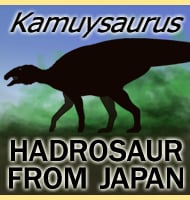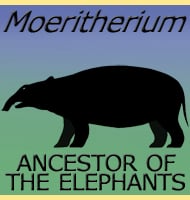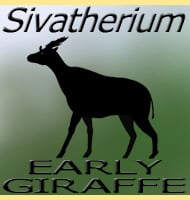In Depth
There appears to be some confusion regarding the full size of Prestosuchus. Earlier fossil discoveries seemed to point at a total length of around five hundred centimetres for an adult Prestosuchus. However an almost complete specimen reported in 2010 was stated as being the equivalent of about six hundred and seventy centimetres long. If this is correct, then Prestosuchus would represent one of the largest rauisuchian predators that we know about, with only the genus Saurosuchus being larger.
Regardless of what the adult size of Prestosuchus was, it was without doubt an apex predator that would have targeted other reasonably large animals. Rauisuchians like Prestosuchus are usually seen as ambush predators, rearing up and delivering a strong bite to the back of a target animal. Evidence does actually support his, as the aforementioned 2010 specimen of Prestosuchus was found in sedimentary rock that has been perceived to have been a watering hole for local wildlife. Ambush predators are known to haunt such locations as inevitably prey species will come to them in order to drink.
The key thing about the 2010 specimen of Prestosuchus is that it included a remarkably well preserved rear leg, so much so that paleontologists were able to accurately reconstruct the muscle groups of the leg, and allowing for a more accurate general reconstruction of the animal. In Prestosuchus the strongest and best developed muscles of the rear leg were for limb rotation, not back and forth movement, which indicates that Prestosuchus had a primarily quadrupedal posture. It should be pointed out however that other types of rauisuchian such as poposaurids like Poposaurus, seem to have been primarily bipedal.
Further Reading
- Lieferungen 3/4. Pseudosuchia, Saurischia, Rhynchosauridae und Schlussabschnitt [Parts 3/4. Pseudosuchia, Saurischia, Rhynchosauridae, and Conclusions]. Die Fossilen Reptilien des S�damerikanischen Gondwanalandes. Ergebnisse der Sauriergrabungen in S�dbrasilien 1928/29 [The Fossil Reptiles of South American Gondwanaland. Results of the Dinosaur Expeditions in southern Brazil 1928/29]. - C. H. Beck’sche Verlagsbuchhandlung, M�nchen 161-332. - Friedrich von Huene - 1942. - A reconstruction of the thigh musculature of the extinct pseudosuchian Prestosuchus chiniquensis from the Dinodontosaurus Assemblage Zone (Middle Triassic Epoch), Santa Maria 1 Sequence, southern Brazil. - Geological Society, London, Special Publications. doi:10.1144/SP379.20. - A. Liparini & C. L. Schultz - 2013. - The braincase of Prestosuchus chiniquensis (Archosauria: Suchia) - Geological Society of London Special Publications 08/2013; 379(1):425-440. DOI: 10.1144/SP379.10 - B. M. Mastrantonio, C. L. Schultz, J. B. Desojo & J. B. Garcia - 2013. – New insights on Prestosuchus chiniquensis Huene, 1942 (Pseudosuchia, Loricata) based on new specimens from the “Tree Sanga” Outcrop, Chiniqu� Region, Rio Grande do Sul, Brazil. – PeerJ. 4: e1622. – Marcel B. Lacerda, Bianca M. Mastrantonio, Daniel C. Fortier & Cesar L. Schultz – 2016. – On the presence of the subnarial foramen in Prestosuchus chiniquensis (Pseudosuchia: Loricata) with remarks on its phylogenetic distribution. – Anais da Academia Brasileira de Ci�ncias. 88 (3): 1309–1323. – L�cio Roberto-Da-Silva, Marco A. G. Fran�a, S�rgio F. Cabreira, Rodrigo T. M�ller & S�rgio Dias-Da-Silva – 2016. – An impressive skeleton of the giant top predator Prestosuchus chiniquensis (Pseudosuchia: Loricata) from the Triassic of Southern Brazil, with phylogenetic remarks. – Historical Biology. 0: 1–20. – L�cio Roberto-Da-Silva, Rodrigo Temp M�ller, Aur�lio Gallo de Marco, S�rgio Furtado Cabreira & S�rgio Dias-Da-Silva – 2018. – Anatomy, taxonomy and phylogenetic relationships of Prestosuchus chiniquensis (Archosauria: Pseudosuchia) from the original collection of von Huene, Middle-Late Triassic of southern Brazil. – Palaeontologia Electronica. 23 (1): 1–55. – Julia Brenda Desojo, Mar�a Bel�n von Baczko & Oliver W.M. Rauhut – 2020.










